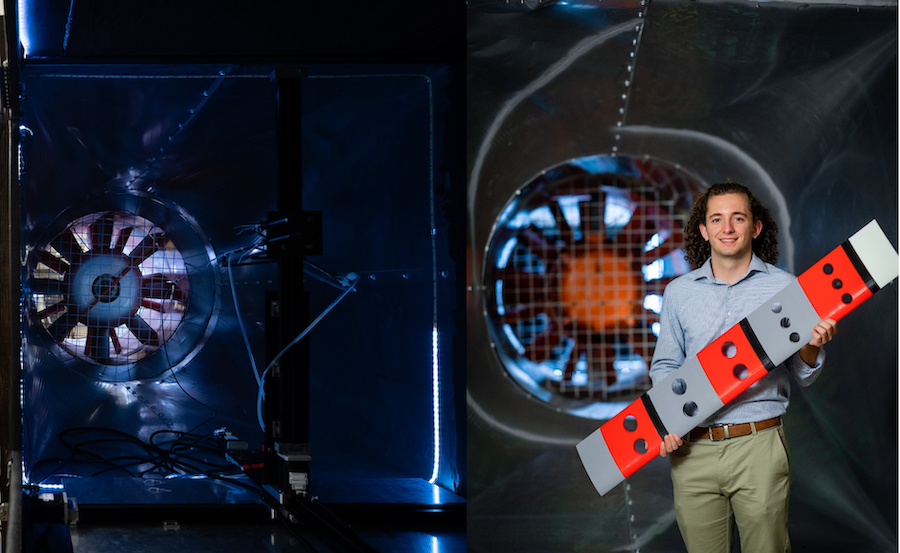Large-scale wind tunnel planned for Tennessee Tech students, researchers

“The tunnel and facilities will increase our ability and capacity in performance computing and will also enhance teaching,” said Tech President Phil Oldham. “We continue to increase our courses in this area. In addition to new opportunities for our students and faculty researchers, the wind tunnel is another of many efforts to focus on helping the Upper Cumberland. Rural areas and businesses can transform with Tech's help.”
The Tennessee Tech Foundation plans to purchase approximately four acres of land in Crossville, Tennessee along with existing structures that will provide teaching spaces and opportunities to work with physical models that the university’s campus does not otherwise have space for.
“A wind tunnel is exceptionally instrumental in researching any fluid-structure interaction problem,” said Assistant Professor of Mechanical Engineering Ahmad Vaselbehagh. “This includes the interactions of a fluid flow, generally air, with vehicles, birds, missiles, airplanes, spaceships, buildings, bridges, turbines, and every other manmade or natural structure located in the air or any other fluid flow.
“Tennessee Tech and our partners will primarily use this wind tunnel for aerospace, vehicle engineering, and wind energy applications. We will also use it for developing fundamental science in several areas, particularly turbulence and aerodynamics."
The facility will house a 140-foot-long wind tunnel with a 500-horsepower fan and a test section that is 10 feet wide, 10 feet tall, and 23 feet long. Inside the tunnel, wind speed can reach 140 miles per hour. That’s more than double the size and wind speed capacity of the current Fluid Mechanics Research Laboratory on Tech’s campus.
In the new facility, researchers will be able to explore ideas and work with actual prototypes, moving beyond limitations of working with theoretical designs or small wind tunnels that call for scaled-down testing models.
By acquiring an existing wind tunnel and moving it from its current location in Minnesota to the existing facility in Crossville, the cost savings to provide the space to the campus community are significant.
Few universities have such testing facilities, moving Tech’s aerodynamic capabilities up among the very top institutions in the nation. The tunnel will also be a significant boost to Tech’s aerospace concentration in the university’s College of Engineering and will be integrated into current courses offered at the university.
“This wind tunnel will significantly boost that program and help students better understand the topics via experimentation,” said Vaselbehagh.
Vaselbehagh, Assistant Professor of Mechanical Engineering Arman Sargolzaei, Associate Professor of Mechanical Engineering Rory Roberts and others at Tech have ongoing research projects that will be aided by the facility, including research related to artificial intelligence to aid pilots in managing flights under attack, managing aircraft turbulence and controlling aspects of drones flying close to one another.
“We will employ the wind tunnel to test and validate those studies,” Vaselbehagh said. “The wind tunnel will be instrumental to the local high-tech industry too. For instance, Whisper Aero, a local company aiming to design an electric thruster that will make drones quieter and more efficient, is a potential local industry that can benefit from this facility.”

